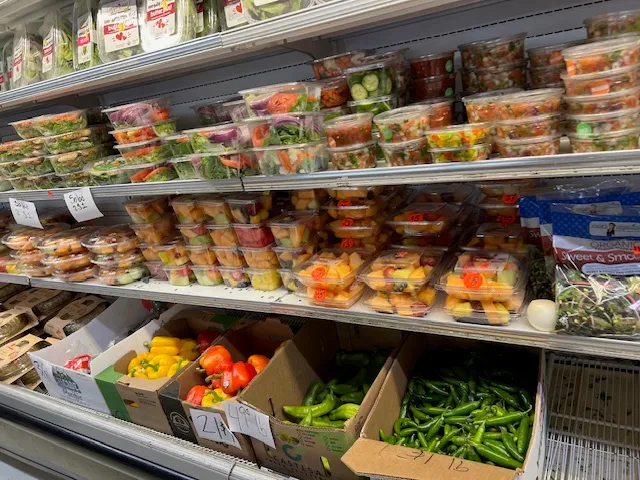Table of Contents
Title: The Vital Role of Food Donors in Combating Waste and Nourishing Communities
Introduction
Food donors—ranging from multinational corporations to local farmers and individuals—play a pivotal role in addressing food waste and insecurity. By redirecting surplus food to those in need, they turn potential waste into a resource, fostering sustainability and community well-being. This article explores their value, challenges, and strategies to maximize impact.
Value Proposition of Food Donation
- Environmental Stewardship: Diverting food from landfills reduces methane emissions, a potent greenhouse gas.
- Social Responsibility: Enhances corporate reputation and community trust by addressing hunger.
- Economic Benefits: Tax deductions (e.g., U.S. tax code Section 170(e)(3)) for donated food reduce taxable income.
- Ethical Commitment: Aligns with global sustainability goals like the UN’s SDG 12.3 to halve food waste by 2030.
Key Donor Groups & Functions
- Companies & Manufacturers: Donate bulk ingredients or unsold products.
- Supermarkets & Groceries: Provide near-expiry produce, dairy, and packaged goods.
- Restaurants & Cafés: Contribute prepared meals via apps like Olio or Food Rescue US.
- Farmers: Donate “ugly” or surplus crops to food banks.
- Individuals: Share excess through community fridges or platforms like ShareWaste.
- Meat/Seafood Shops: Freeze perishables for donation or partner with shelters.
Functions:
- Surplus Identification: Use predictive analytics (e.g., Leanpath) to track excess.
- Safety Compliance: Ensure donations meet food safety standards.
- Logistics Coordination: Partner with nonprofits for pickup/delivery (e.g., Feeding America).
Acceptance & Community Impact
- Public Trust: Transparent handling and clear labeling boost acceptance.
- Nutrition Focus: Prioritizing fresh produce, proteins, and whole grains promotes healthier diets in food-insecure populations.
- Education: Campaigns like #SaveTheFood raise awareness about donation safety and benefits.
Challenges & Solutions
- Regulatory Hurdles:
- Issue: Liability fears (mitigated by laws like the Bill Emerson Act in the U.S.).
- Solution: Legal workshops for donors to clarify protections.
- Storage & Shelf Life:
- Issue: Perishables require refrigeration.
- Solution: Invest in cold storage partnerships (e.g., Daily Table’s retail model).
- Logistics:
- Issue: Transportation gaps for small donors.
- Solution: Apps like Copia connect donors with local charities.
- Valuation for Tax Write-Offs:
- Issue: Complex IRS guidelines for food valuation.
- Solution: Tools like Food Donation Connection streamline documentation.
Maximizing Impact: Strategies for Donors
- Repurposing Excess:
- Turn bruised fruit into jams, stale bread into croutons, or surplus meat into frozen meals.
- Tech-Driven Solutions:
- Use blockchain (e.g., IBM Food Trust) for traceability, or AI to predict surplus.
- Direct Sales & Discounts:
- Sell near-expiry items via apps (Too Good To Go) or in-store “flash sales.”
- Partnerships:
- Collaborate with food banks, schools, and NGOs for efficient distribution.
Promoting Healthy Eating
- Nutrient-Rich Donations: Prioritize fresh produce, lean proteins, and whole grains.
- Education Programs: Partner with dietitians to create recipes for donated ingredients.
- Subsidized Markets: Models like Fair Food Network offer SNAP discounts on healthy foods.
Return on Investment (ROI)
- Financial: Tax savings and reduced waste disposal costs.
- Brand Equity: Improved customer loyalty and ESG (Environmental, Social, Governance) ratings.
- Community ROI: Every $1 invested in food recovery yields $14 in social benefits (ReFED).
Case Studies & Innovations
- Kroger’s Zero Hunger | Zero Waste: Aims to donate 3 billion meals by 2025.
- Panera Bread’s Day-End Dough-Nation: Daily donations to local shelters.
- Farmlink Project: Connects surplus farm produce to food banks, rescuing 100M+ pounds of food.
Conclusion
Food donors are essential actors in building a sustainable, equitable food system. By overcoming logistical and regulatory challenges, leveraging technology, and prioritizing nutrition, they transform waste into wellness. For businesses and individuals alike, donation is not just an act of charity—it’s a strategic, ethical, and environmental imperative. Together, we can nourish communities and protect the planet, one meal at a time.







